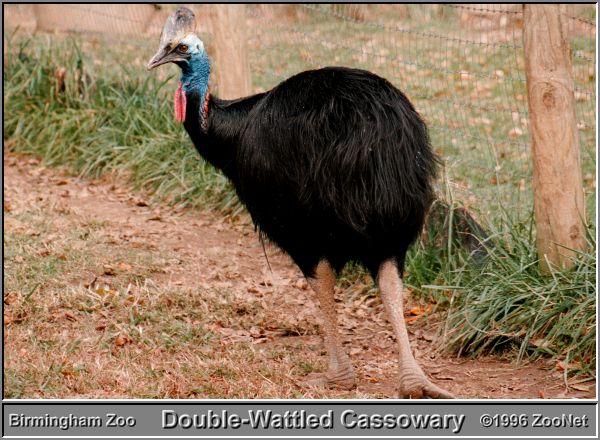

Cassowaries are closely related to emus. The family consists of three species - the Double-wattled, the Single-wattled, and the Dwarf. The Double-wattled cassowary is the largest, standing up to 180 cm tall. The Dwarf cassowary stands a little over 100 cm.
A prominent feature of cassowaries is the large horny casque on the head, which may be up to 15 cm high. The casque serves to part undergrowth as the bird searches for food. They also have long, sharp claws used in fighting and have been known to kill humans in New Guinea.
Cassowaries are restricted to New Guinea, northeastern Australia, and nearby islands. The Double-wattled and Single-wattled cassowaries inhabit low-lying rain forests and swamps, while the Dwarf cassowary prefers mountain forests, mainly above an elevation of 1000 metres. Their diet consists mostly of fruit and leaves.
Nests are scraped out of the ground. The female lays from three to eight eggs, which the male incubates.
